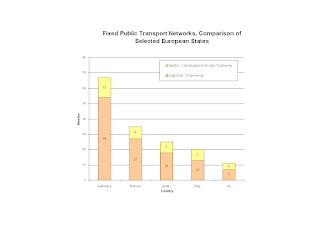You have
probably heard about an important judgment handed down by the Supreme Court that
has significant implications for the sequential test for main town centre type
development, like retail, offices, and leisure. It is so important to what you
do, that we wanted to remind people about it and clarify its main points.
In short, it means that a
sequentially preferably site must be suitable to accommodate the development as
proposed (with due regard to flexibility), rather than
being suitable for the development for which there is an acknowledged ‘need’. The result is that a local planning authority
cannot refuse an application for an out-of-centre development on the basis that
a smaller development is all that is needed, and which might be accommodated on
a site in or on the edge of the town centre.
We have
summarised the Judgment below - please get in touch with us if you would like
to discuss how this could affect your development proposals.
The Decision
In Tesco
Stores Ltd v Dundee City Council [2012] UKSC 13, on the 21st March 2012 the
Supreme Court rejected Tesco’s challenge to Dundee City Council’s decision to
grant planning permission to an Asda store.
The case hinged on whether, in making its decision, Dundee City Council
had misunderstood one of its policies relating to the sequential test. The judgment established two important
principles relating to interpretation of planning policy generally, and the
sequential test specifically.
Firstly,
it established that, contrary to popular belief, decision
makers cannot interpret planning policy in any way they choose, subject
only to the limits of rationality.
Rather, the interpretation of planning policy is a matter of law.
The
second principle follows on from the first, in that it established the
objective interpretation of the sequential test within planning policy. The key question was, when assessing whether
a ‘suitable’ town centre site was available, whether ‘suitable’ meant suitable
for the proposed development, or suitable to meet
identified deficiencies in retail provision in the area. It was concluded that the natural reading of
the policy is that the word ‘suitable’ refers to the suitability of sites
for the development specifically proposed.
The
Dundee Judgment reinforced the views expressed by Lord Glennie in Lidl UK GmbH
v The Scottish Ministers [2006] CSOH 165.
Lord Glennie said a site would be suitable in terms of policy only if it
was suitable for, or could accommodate, the development as proposed by the
developer. The question was whether the
alternative town centre site was suitable for the proposed development, not whether the proposed development could be altered or
reduced so that it could fit into it.
Whilst
the Dundee Judgment related to the application of Scottish planning policy, the
judgment and statements hold true for planning policy in England. A natural reading of paragraph 24 of the National
Planning Policy Framework is that ‘suitable’ refers to suitability for the
proposed development. To say that ‘suitable’ refers to suitability to meeting an
identified need would be to attribute a meaning to the policy which is not
contained within the policy wording.
Dundee
in Action
In
granting outline permission at appeal for an out-of-centre foodstore in Newport, Shropshire, the
Appeal Inspector’s comments on the sequential test support the Dundee
Judgment that the suitability of sites should be assessed against the proposed
development rather than ‘need’. The Inspector
noted that, in a previous appeal case, two sites near the town centre were
found by an Inspector to be suitable, but that this was in the context of a
proposal for a smaller retail unit. The
Inspector stated “even allowing for some
flexibility it is difficult to see how either site would be suitable in terms
of its configuration and size for
the type of foodstore being proposed in the present appeal”.
Demonstrating Flexibility
The
Dundee Judgment also made important statements upon the need for applicants to
demonstrate flexibility. The emphasis is
on both flexibility and realism. Lord
Reed referred to R v Teesside Development Corporation, ex parte William
Morrison Supermarkets plc and Redcar and Cleveland
BC [1998] JPL 23, 43, and stated
that
“to refuse an out-of-centre
planning consent on the ground that an admittedly smaller site is available
within the town centre may be to take an entirely inappropriate business
decision on behalf of the developer”.
Lord
Hope emphasised the need for the sequential assessment to function in the real
world, stating
“developments of this kind are generated by
the developer’s assessment of the market that he seeks to serve. If they do not meet the sequential approach
criteria, bearing in mind the need for flexibility and realism to which Lord
Reed refers in paragraph 28, above, they will be rejected. But these criteria are designed for use in
the real world in which developers wish to operate, not some artificial world
in which they have no interest doing so”.
The Dundee Judgment
confirmed ,that a flexible approach must be adopted towards development proposals. Asda did not confine its assessment to sites
which could accommodate the development in the precise form in which it had
been designed, but examined sites which could accommodate a smaller development
and a more restricted range of retailing.
Our Advice to You: Whilst you will
need to demonstrate a degree of flexibility, this does not mean you have to
compromise on the form and scale of development you consider to be necessary,
based on your assessment of the market.









